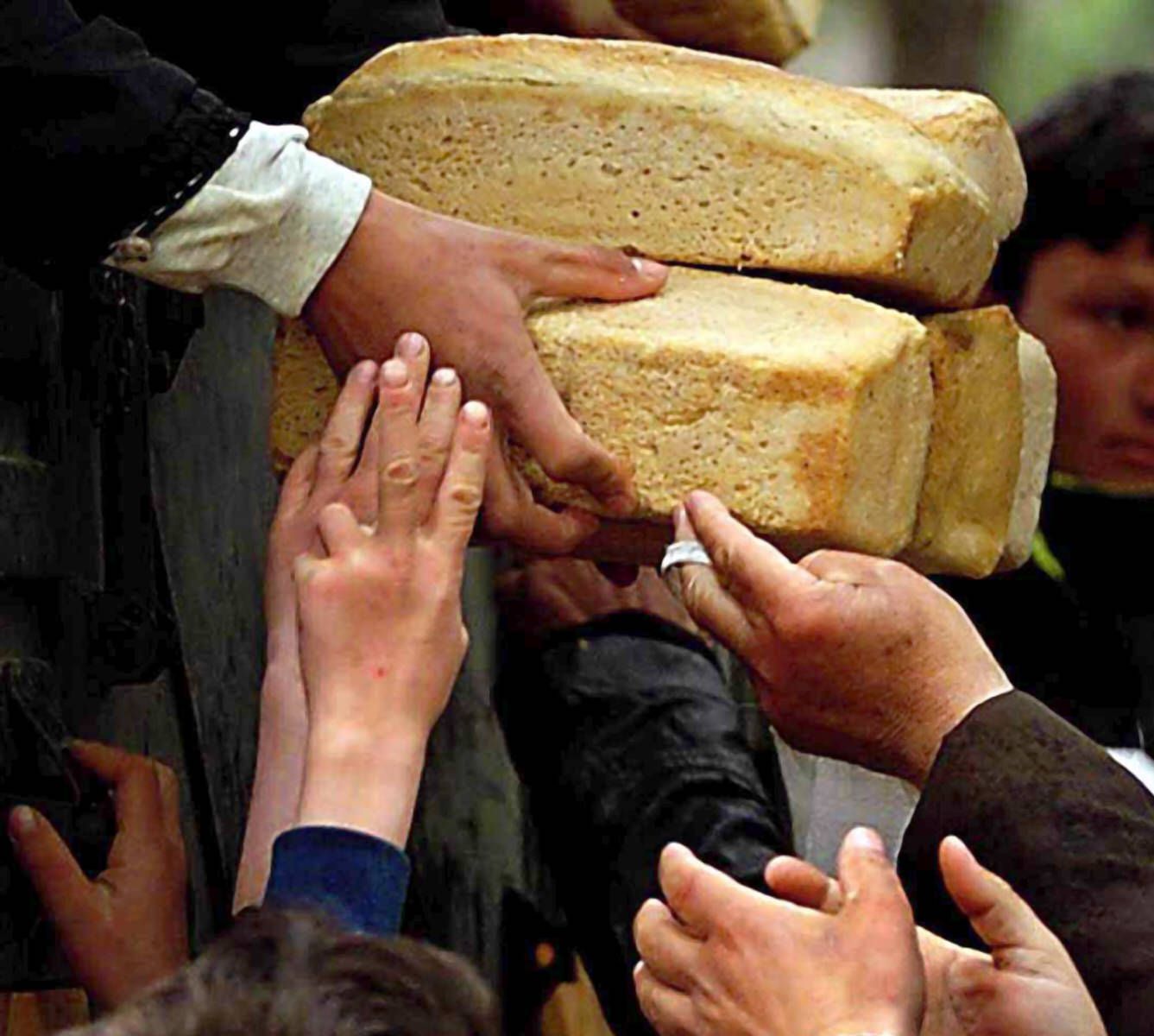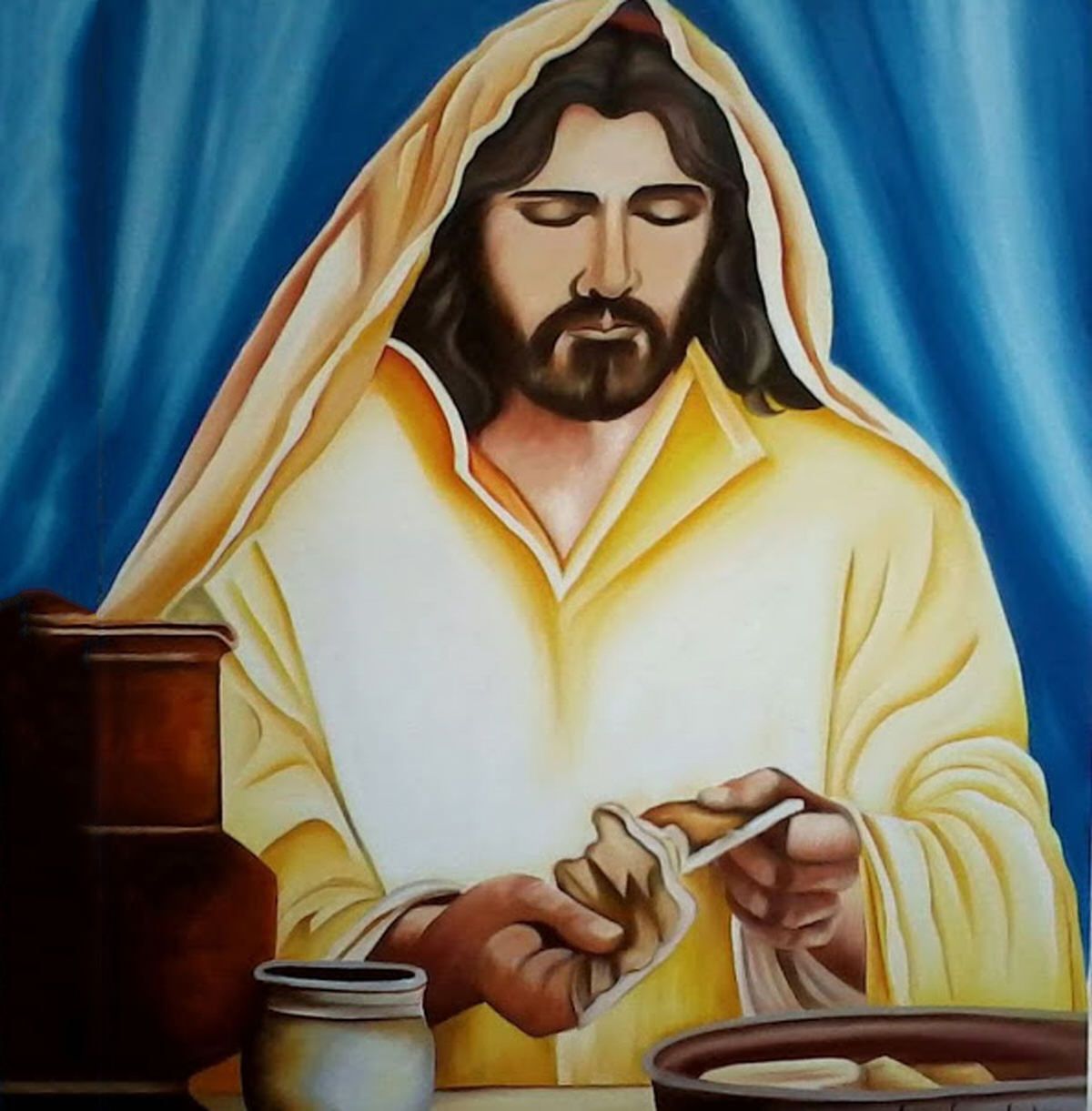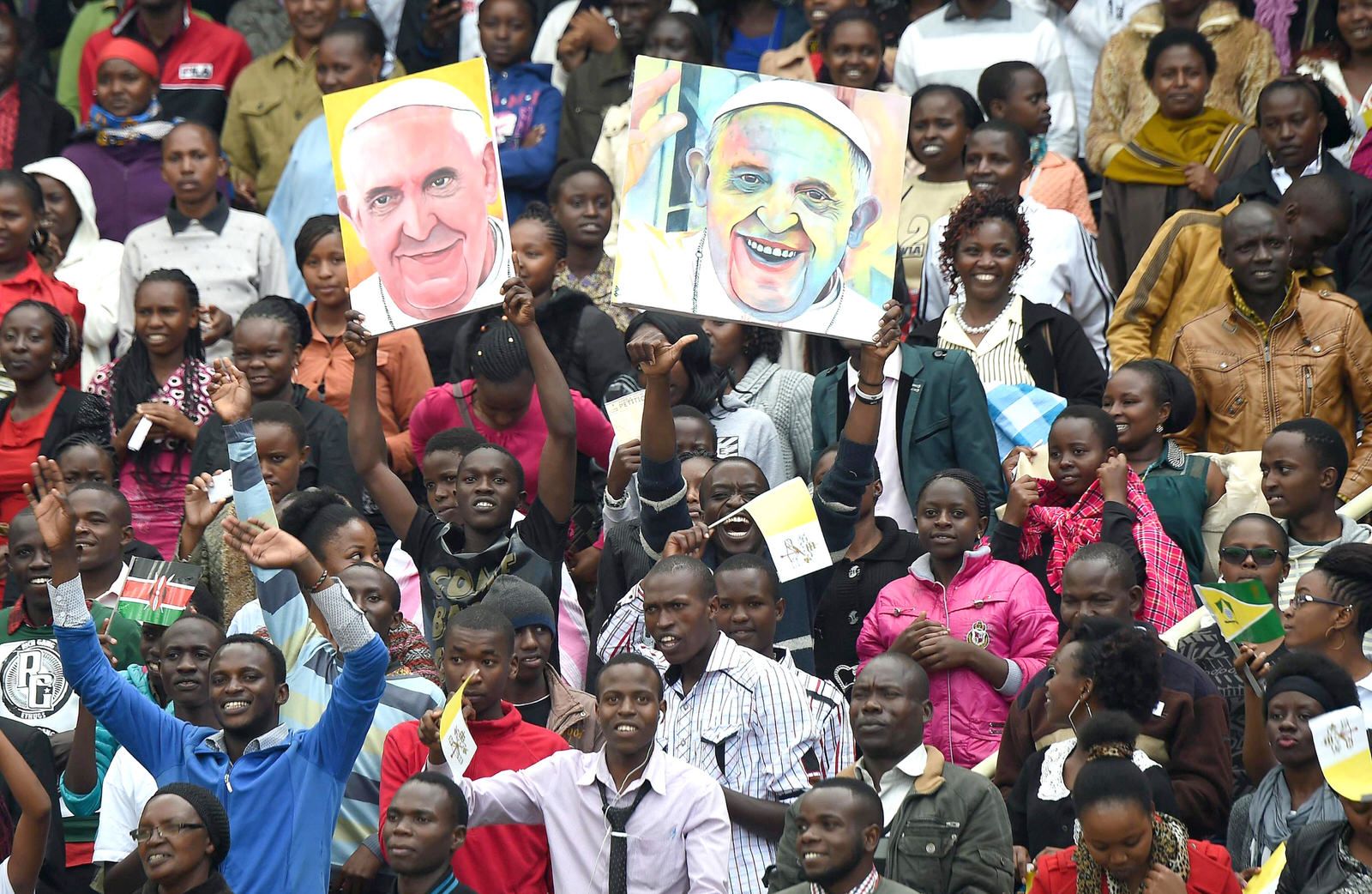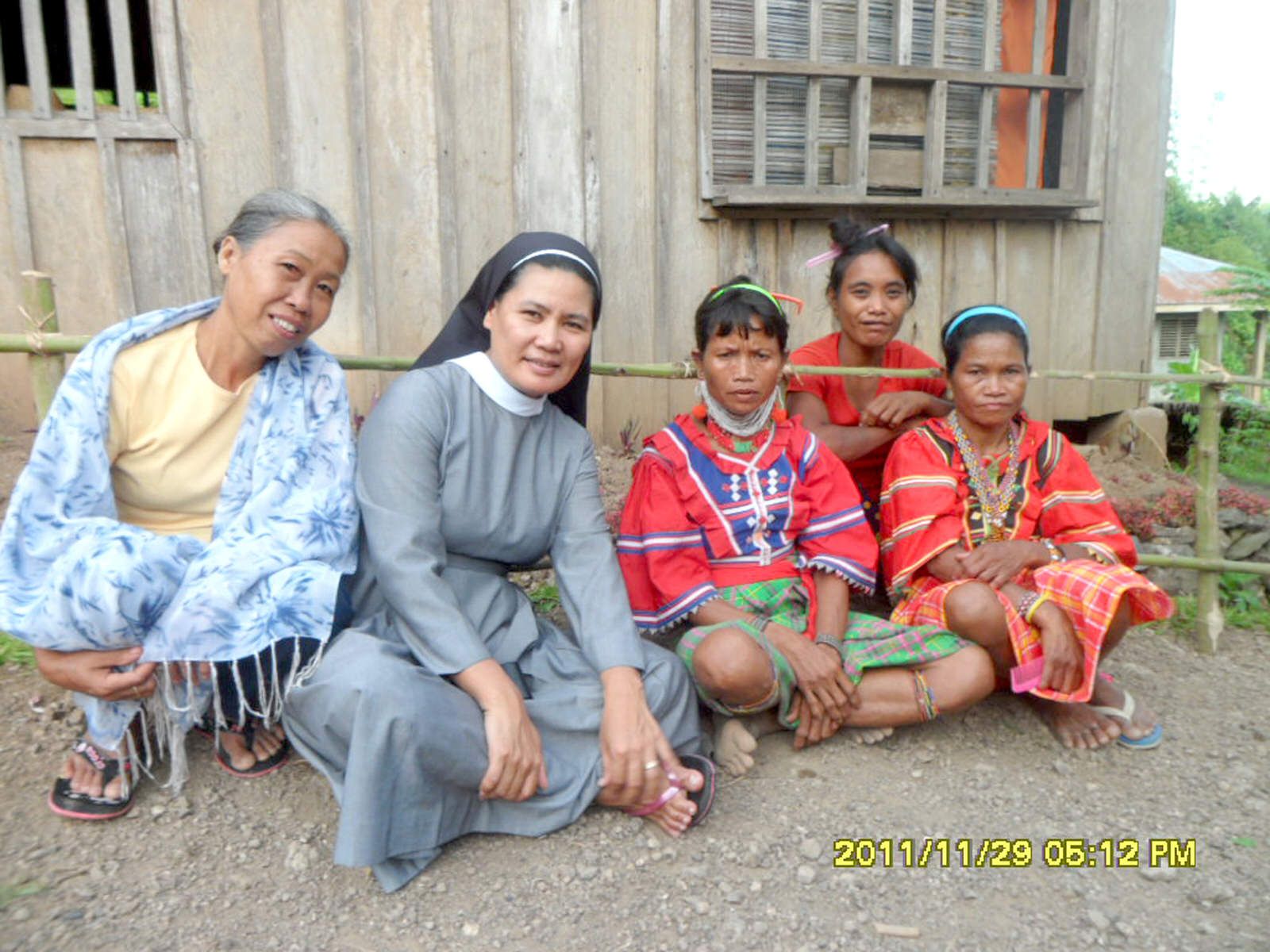According to the Gospel of John, Mary and Martha lived in Bethany, a village in the suburbs of Jerusalem. St. John always mentions them together and with their brother Lazarus. Theirs seem to be a well-off family. They are friends of Jesus and welcome Him with His entourage of about 30 people when they go to Jerusalem. There, Jesus had the opportunity to rest and “lay his head” (Mt 8:20). Bethany is the “sanctuary” of friendship and hospitality.
Martha seems to be the eldest and the owner of the house. Her name probably means “lady of the house.” The name is masculine in the Nabatheus tribe and, in the Rabbinic book of the Talmud, it can be masculine or feminine. She is a dynamic and active woman.
Mary seems to be younger, sweeter and more introspect. The etymology of the name is unsure: “rebellion,” “loved,” or “sublime.”
According to Luke, Martha and Mary welcome Jesus into their home. While Martha is busy getting the food ready for their guests, Mary stays at Jesus’ feet, listening to Him. Irritated, Martha asks Jesus to tell her sister to come and give her a hand. Jesus comes out with an unexpected response: “Martha, Martha, you worry and fret about so many things, and yet few are needed, indeed only one. It is Mary who has chosen the better part, and it is not to be taken from her.”
These words of Jesus’ are the subject of numerous interpretations, sometimes tendentious or ideological. But it can help us meditate on our vocation as Jesus’ disciples.
Submission or emancipation?
Mary’s attitude – affectionate, devoted and silent – was extolled by a certain machistic clerical element, in favor of woman’s submission to man.
Martha, on the other hand, a woman who is brave enough to “open her mouth” and show her individuality, could be a symbol of female emancipation In some medieval paintings, she is represented as the female equivalent of St. George or St. Michael, the difference being that she does not kill the dragon but tames it, taking it by the head as if it were a pet. It is a different, feminine way of dominating evil, not suppressing the adversary but taming it.
In reality, the figure of Mary is also revolutionary. Being at someone’s feet meant being his disciple. Now, in the days of Jesus, the study of the Torah (law) was exclusively for men. In the Hebrew and Aramaic languages, the word “disciple” had no feminine form. In this way, Jesus praising Mary’s attitude adopts a provocative stance, rejecting the patriarchal way of thinking. Moreover, it disqualifies, in some way, the traditional “exemplary woman” that Martha represents, sorting out the many household tasks (cf Prov 31:10ss).
Consequently, both represent a form of female emancipation. Martha, with her entrepreneurial extroversion, and Mary, with her silent introversion, are a model of an integrated humanity, where silence and speech, introversion and extroversion, can live side by side.
Action or prayer?
Tradition sees in Martha the symbol of an active life and in Mary a spiritual or contemplative life, and the supremacy of the latter over the former. “Corporal service” is inferior to “spiritual service,” according to St. Basil. While active life ends in the present world, the contemplative continues into the future life, says St. Gregory the Great. But he adds that it is necessary “to marry” the two, like Jacob who, although he preferred Rachel who was prettier but sterile, had to first marry Lia, who was less fascinating but fecund.
Deep down, the contrast between an active and a contemplative life is false because one cannot exist without the other. One does not exclude the other but they work together. It is an accentuation of the two essential dimensions in the vocation of the disciple. Martha and Mary are united, as St. John makes us understand, always mentioning them together. Jesus loves both (Jn 11:5). Moreover, St. John says it is Martha who runs to meet Jesus and makes a moving confession of faith (Jn 11:20.27). Martha and Mary are not antagonistic but complementary figures. We are all called to embody Martha and Mary, to be servants and listeners of the Word.
The two sisters’ lives reconciled. This is how they are represented by the Franciscan artist Fra Angelico, in his painting in Florence. Both spiritually witness Jesus’ agony in the garden. While the three disciples sleep, they watch focused on the mystery. Mary reading the Word, Martha hearing it attentively and with tenderness. The two “wives” co-exist peaceably.
Law or Gospel?
We could also suppose that Luke, presenting these two stylized figures, wanted to show two types of service in the Christian community: the “table service” (deaconry) and the “service to the Word” (prophecy). Faced with the two, at a certain point, the apostles have to make a choice: “It would not be right for us to neglect the Word of God so as to give out food” (Acts 6:2). Serving the Word would be superior to that of charity.
For some, Martha and Mary exemplify two phases of the discipleship. Martha, worried about “doing lots of things,” symbolizes the “first conversion,” the purification of the work. Mary, concentrated on the “one necessity” embodies the “second conversion,” the purification of the heart. In this case, Martha represents the Old Testament (the Torah with its 613 precepts) and Mary, the New (with the “Law of Love” which unites them).
The fact is that they represent two essential and equally important dimensions of the Wife who can be identified with her Husband… “came… to serve” (Mk 10:45). Or rather, a splendid Christian community in its wedding dress, “sitting to the right of the King,” but equally capable of divesting themselves of their garments to put on a work apron to wash the feet of their sons (Jn 13:4-5).
To do or to be?
The context of the episode at Bethany is eloquent. On the one hand, it is preceded by the parable of the “Good Samaritan,” which ends saying: “Go, and do the same yourself!” (Lk 10:37). On the other hand, it is immediately followed by Jesus’ teaching of the Lord’s Prayer (Lk 11:1-10). It could be said that Luke wanted to highlight the unity between doing (“become close” to your brother) and listening to the Word (“be close” to God).
If the “Good Samaritan” is an icon of loving your neighbor, Bethany is that of loving God. Martha “does,” Mary “loves.” The episode of the anointing at Bethany, narrated by St. John, is a confirmation of this re-reading. Jesus defends Mary against Judas, who appealed to charity to the poor to criticize her (Jn 12:8).
Conclusion
Martha and Mary always appear “at home.” The house and the village are the temple of normal life, the domestic “church.” The normal condition of the Christian, of the layman. Listening to the Word and Service are at the center. It is a question of making our home a “Bethany” – to welcome our Friend Christ. Hosting a person at our house changes our priorities and our way of doing things!
Martha and Mary both love Jesus but differ in their priorities. Mary concentrates her attention on Jesus and delights in His presence. Martha, concerned about the chores, gives in to worry, impatience and tiredness. And Jesus’ presence ends up becoming a “burden” for her. That’s the problem.
Martha’s state of irritation brings Jesus to “call her” tenderly to bring her back to the essential, to convert her to the “purely necessary,” in search of the Kingdom of God. All the rest will come as well. (Lk 12:31).
Time is pressing and, therefore, the disciple cannot worry about “many things.” The multiplicity of services is not necessarily synonymous of the “service” that Jesus expects of His disciple. It is, therefore, necessary to establish priorities and emergencies. In other words, discernment is needed. Paul says: “It is my prayer that your love for one another may grow more and more with the knowledge and complete understanding that will help you to come to true discernment, so that you will be innocent and free of any trace of guilt when the Day of Christ comes” (Phil 1:9-10).























